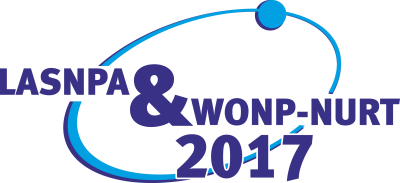Speaker
Description
Positron emission tomography (PET) is one of the most important diagnostic tools in medicine, allowing three-dimensional imaging of functional processes in the body. It is based on a detection of two gamma rays with an energy of 511 keV originating from the point of annihilation of the positron emitted by a radio-labeled agent. By measuring the difference of the arrival times of both annihilation photons it is possible to localize the tracer inside the body. The gamma rays are normally detected by a scintillation detector, which timing accuracy is limited by a photomultiplier and a scintillator. By replacing a photo sensor with a micro channel plate PMT (MCP-PMT) and a scintillator with Cherenkov radiator, it is possible to localize the interaction position to the cm level. In a pioneering experimental study with Cherenkov detectors using $PbF_2$ crystals and microchannel plate photomultiplier tubes MCP-PMT a time resolution better than 100 ps was achieved. In this work a DRS4 digital ring sampler chip was used to read out single photons output signals from two different MCP-PMTs (Hamamatsu R3809 and Burle 85001) with a sampling rate of 5$\times$10$^9$ samples/s. The digitized waveforms were analyzed and a comparison between the two detectors timing response was made. The best time resolutions achieved were 161 and 224 ps FWHM for the Hamamatsu and Burle MCP-PMT respectively.




